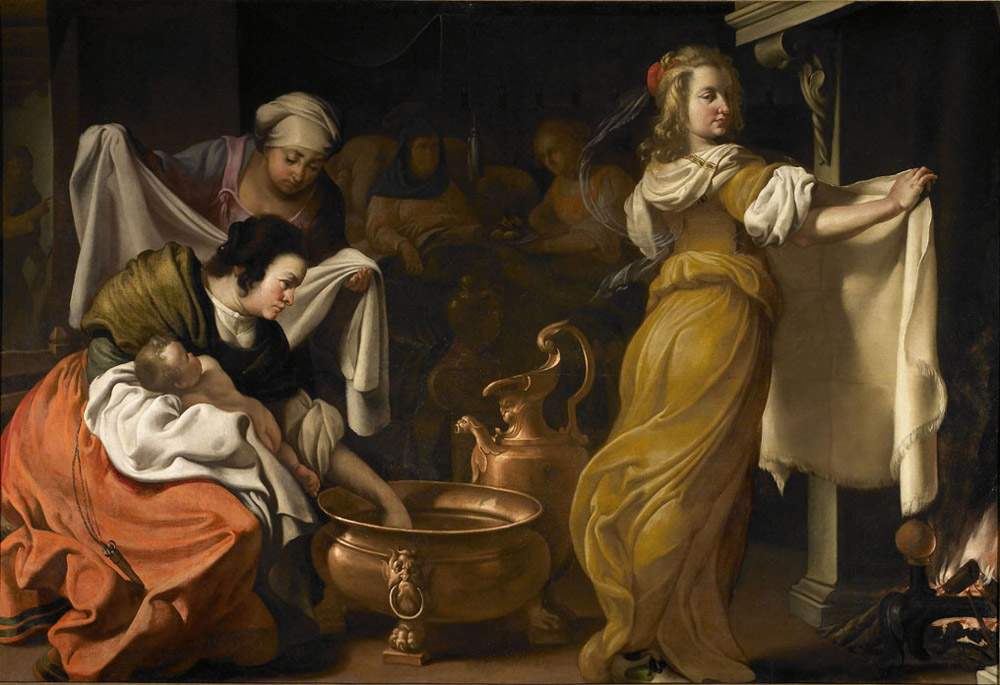In Cremona the first monographic exhibition for the Genovesino
He is a little-known author, but he held a notable importance in seventeenth-century painting: he is Luigi Miradori, better known as the Genovesino (Genoa, c. 1605 - Cremona, 1656), Genoese by birth but Cremonese by adoption: it was in Cremona that he left the greatest number of his works, and now the city pays tribute to him with a major monographic exhibition, the first one dedicated to him, from October 6, 2017 to January 6, 2018, entitled Genovesino. Nature and Invention in Seventeenth-Century Painting in Cremona, at the Ala Ponzone Civic Museum. Genovesino, among the most sought-after painters of the Lombard aristocracy of the 17th century (his main patron was the Spanish governor Don Álvaro de Quiñones), was a very versatile and curious artist, the author of works that ranged on various themes, from religion to literature to music (he himself was a musician, playing the “colascione,” a kind of long-handled lute), and above all he was a continuous experimenter.
The Genoese exhibition, curated by Francesco Frangi, Valerio Guazzoni and Marco Tanzi, and backed by a scientific committee composed of several art historians, is divided into an itinerary of fifty works, some of which have been restored for the occasion, from Italian museums, Lombard churches, and private Italian and foreign collections. The itinerary, subdivided by themes that nonetheless follow a chronological order, opens with the Lute Player from Palazzo Rosso in Genoa and continues with a section devoted to religious paintings, such as the Birth of the Virgin from Museo Civico Ala Ponzone, theAdoration of the Magi from the National Gallery in Parma, the Holy Family from the Gazzola Institute in Piacenza, and a masterpiece such as the Rest in the Flight into Egypt from the church of Sant’Imerio in Cremona. Then there will be the works made for private collectors, such as the allegories of Vanitas and portraits (including the Portrait of Sigismondo Ponzone with a Dog and the Portrait of a Gentleman, a masterpiece of seventeenth-century Lombard portraiture preserved in Mantua, at Palazzo D’Arco). Genre scenes, marked by suggestions derived from Caravaggesque luminism, and works from the last phase of his career close the exhibition.
“The need for a monographic exhibition on Luigi Miradori, known as the Genovesino,” say the curators, “has been felt in Cremona for many years now, as the artist of Ligurian origin, while being the main protagonist of painting in the city Lombardy from the mid-1630s until his death in 1656, has not yet enjoyed at the exhibition level the fortune commensurate with his role of excellence in the Baroque figurative scene in northern Italy. Let us not forget that the leading 20th-century Cremonese art historian, Mina Gregori, dedicated her degree thesis to Miradori: a work discussed at the University of Bologna with Roberto Longhi in 1949 and which in fact opened the season of modern studies on the painter. The exhibition takes the form of a monographic exhibition, aimed at accounting for the various stages of the painter’s stylistic and professional career, bringing together for the first time a large number of autograph paintings.”
Accompanying the exhibition will also be reasoned itineraries that will lead visitors to discover the Genovesino’s works that could not be brought to the exhibition, from the cycle of the Stories of St. Roch in Cremona Cathedral to the large canvases in the Town Hall. “Such an exhibition, accompanied by the itineraries,” the curators conclude, “will provide an opportunity to evoke an indelible cross-section of seventeenth-century Cremona and to recover for the first time in an organic way the activity of one of the protagonists of the figurative culture of the seventeenth century, between Liguria, Emilia and Lombardy.”
The exhibition is open daily, except Mondays, from 10 a.m. to 5 p.m. Admission: 10 euros full price, 8 euros concessions and groups, 3 euros for those entitled to free admission to the museum. With the ticket you can also visit the Ala Ponzone Civic Museum’s Picture Gallery and the “Rooms for Music” collection. Every first Sunday of the month, free admission to the Pinacoteca and €3 admission to the exhibition. All information can be found at www.mostragenovesino.it. Information also on the dedicated Facebook page andInstagram account.
The exhibition is promoted by a special committee formed in 2015 and composed of the City of Cremona, Fondazione Teatro Amilcare Ponchielli, Fondazione Museo del Violino, Department of Musicology and Cultural Heritage of the University of Pavia, Istituto Superiore di Studi Musicali Claudio Monteverdi, Fondazione Stauffer, State Archives, Ministry of Heritage and Culture and Tourism, Region of Lombardy and Municipality of Mantua, and realized thanks to the contribution of numerous entities-including the Government, Region of Lombardy, Municipality of Cremona, Cariplo Foundation, Stauffer Foundation and Chamber of Commerce of Cremona. Catalog published by Officina Libraria.
Pictured: Luigi Miradori known as the Genovesino, Birth of the Virgin (1642; oil on canvas, 190 x 280.5 cm; Cremona, Museo Civico Ala Ponzone)
 |
| In Cremona the first monographic exhibition for the Genovesino |
Warning: the translation into English of the original Italian article was created using automatic tools. We undertake to review all articles, but we do not guarantee the total absence of inaccuracies in the translation due to the program. You can find the original by clicking on the ITA button. If you find any mistake,please contact us.




























